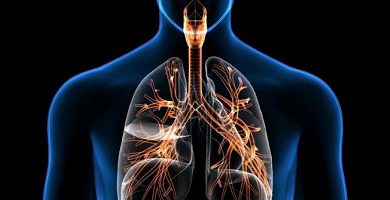What is a chemical bond?
We explain what a chemical bond is and how they are classified. Examples of covalent bonds, ionic bonds and metallic bonds.
-
What is a chemical bond?
We know as chemical bonds to the fusion of atoms and molecules to form larger and more complex chemical compounds endowed with stability. In this process the atoms or molecules alter their physical and chemical properties, constituting new homogeneous substances (not mixtures ), inseparable through physical mechanisms such as filtering or sieving.
It is a fact that the atoms that form matter tend to unite and reach more stable conditions than alone , through various methods that balance or share their natural electrical charges. It is known that the protons in the nucleus of every atom have a positive charge (+) and the surrounding electrons have a negative charge (-), while the neutrons, also in the nucleus, have no charge, but contribute mass (and, therefore, both gravity ).
Chemical bonds occur in nature and are part of both inorganic substances and life forms , since without them the complex proteins and amino acids that make up our bodies could not be built .
Similarly, chemical bonds can be broken under certain and certain conditions , such as being subjected to amounts of heat, to the action of electricity , or to substances that break the existing bond and cause other new joints.
Thus, for example, it is possible to subject the water to electricity to separate the chemical bonds between the hydrogen and the oxygen that make it up, in a process called electrolysis; or add large amounts of caloric energy to a protein to break its bonds and denature it, that is, break it into smaller pieces.
-
Types of chemical bonding
There are three types of chemical bond known, depending on the nature of the atoms involved, like this:
- Covalent bond . It occurs between non-metallic atoms and similar electromagnetic charges (usually high), which come together and share some electron pairs from their last orbit (the outermost), and achieve a more stable electrical form. It is the predominant type of bond in organic molecules and can be of three types: single (AA), double (A = A) and triple (A≡A), depending on the amount of shared electrons.
- Ionic bond . It takes place between metallic and non-metallic atoms, and consists of a permanent transfer of electrons from the metallic atom to the non-metallic atom, producing an electrically charged molecule in some sense, either cations (+1) or anions (-1).
- Metallic bond . It occurs only between metal atoms of the same element, which generally constitute solid, highly compact structures. It is a strong bond, which brings the atomic nuclei together, surrounded by their electrons like in a cloud, and it takes a lot of effort to separate them.
-
Examples of chemical bonding
Some examples of covalent bonding are present in the following compounds:
- Benzene (C 6 H 6 )
- Methane (CH 4 )
- Glucose (C 6 H 12 O 6 )
- Ammonia (NH 3 )
- Freon (CFC)
- In all forms of carbon (C): coal, diamonds, graphene, etc.
Instead, examples of compounds with ionic bonds are:
- Magnesium Oxide (MgO)
- Copper Sulfate (CuSO 4 )
- Potassium iodide (KI)
- Manganese Chloride (MnCl 2 )
- Calcium carbonate (CaCO 3 )
- Iron sulphide (Fe 2 S 3 )
And finally, examples of elements with metallic links:
- Iron Bars (Fe)
- Copper deposits (Cu)
- Pure Gold Bars (Au)
- Pure Silver Bars (Ag)





